Paris Art: Sensuality and Spirituality by Jean-Jacques Henner
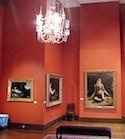
Thu 11 Apr 2013
The Paris art scene can sometimes be overwhelming, from ancient classics at the Louvre down to up-and-coming artists in galleries dotting the city. But it’s good to get away from the most famous spots, and when I spent an afternoon at the Musée Jean-Jacques Henner, I discovered a hidden Paris art gem in the 17th Arrondissement, particularly in light of its current exhibition, “Sensuality and Spirituality: In Search of the Absolute” (through June 17, 2013).
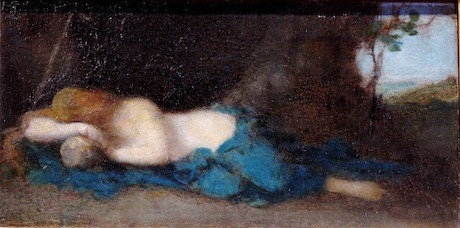
Housed in a mansion that used to belong to the Alsatian painter’s friend and fellow artist Guillaume Dubufe, the museum is a four-story architectural dream that feels both comfortable and classic, with winding wooden staircases and room after room of Henner’s art. With “Sensuality and Spirituality,” Henner’s many religious paintings and sketches are on display, affording viewers the opportunity to follow the artist’s creative process, from emotional inspiration to varnished oil on canvas or wood.
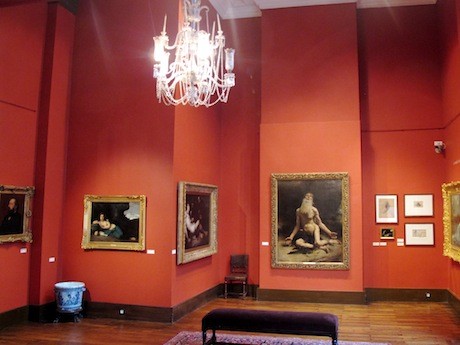
The exhibition, which boasts more than 114 paintings, drawings and sketches, illuminates Henner’s deep connection between spirituality and the mortal experience of having a body. The works range in detail from clear, purposeful lines in some drawings and intricately detailed paintings, to basic geometric studies and some paintings that emerge as soft, dreamy smudges that evoke the wealth of flesh or poverty of hunger with a few quick and masterful strokes.
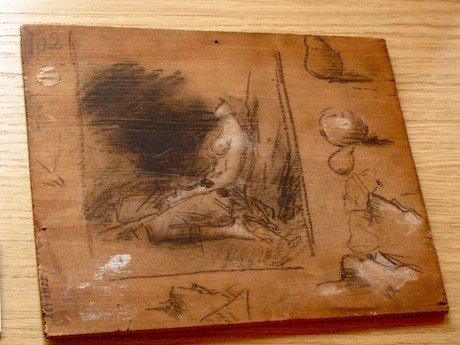
The connection and contrast of the spiritual idea of eternity and the utterly human burden of carrying around a body are highlighted in Henner’s studies of form and shape. It’s fascinating to see the artist’s process, how a figure can go from a model posing on a pedestal to a haunting scene of Jesus in prison. Sketch after sketch reveals Henner’s obsessive effort to capture the details of physical existence—skin rolling thinly over the abdomen of a withered and wrinkled old man, or the way hair falls over a shoulder when a woman is crying.
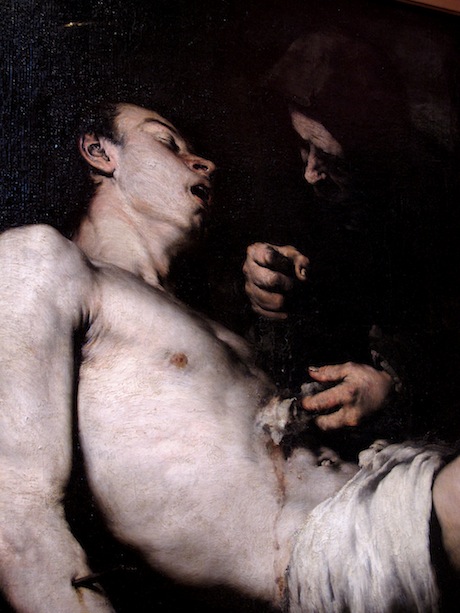
One wall on the sun-drenched top floor displays dozens of small paintings and sketches for a portrait of Saint Sebastian, the finished product of which is a life-size, almost sculptural portrait of the saint with dark faces behind him barely visible, but emerging nonetheless.
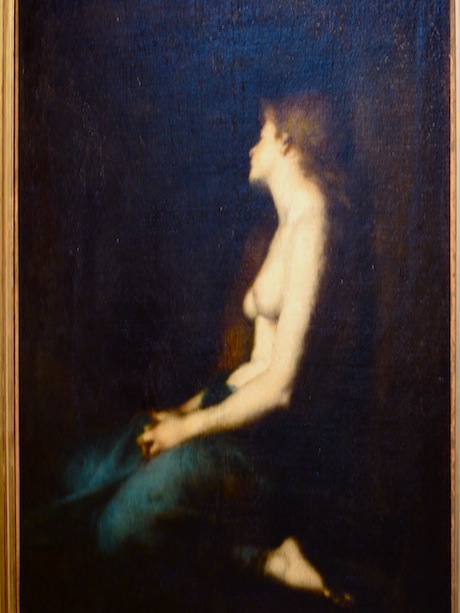
The exhibition itself is a study in complementary opposites, from the idea of sensuality versus spirituality, to the differences between strength and weakness, to Henner’s expertly employed contrast between visual darkness and light. Henner’s chiaroscuro technique itself speaks to the spiritual experience of his subjects, but also yields a corporeal, visceral quality to the work. Light pours onto a nude portrait of Mary Magdalene, her fruit-like, feminine curves like white peaches, soft and flowing from one body part to another like a soft-shored river. In Henner’s version of the Pietà, a vague hint of Mary’s face rises out of the darkness over the softly rendered body of Jesus, upon which shadows creep and spill. And in a portrait of Saint Sebastian, skin is stretched over ribs so defined that one can almost hear the breath of the dying martyr.
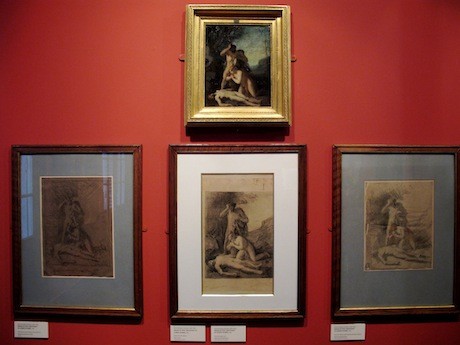
In addition to displaying breathtaking works of art by its namesake, the Musée Henner also hosts classical music concerts and art lectures. Whether you’re a fan of Paris art, architecture or music, this museum is a quiet treasure that deserves to be seen.
Related Link
Musée Jean-Jacques Henner
Editor’s note: If you’re a history buff, contact Pamela at Paris Perspectives for the best historic trips of Paris. GG2P Travel Club members receive a 10 percent discount.